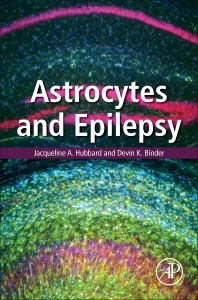Astrocytes and Epilepsy
Auteurs : Hubbard Jacqueline A., Binder Devin K.

Epilepsy is a devastating group of neurological disorders characterized by periodic and unpredictable seizure activity in the brain. There is a critical need for new drugs and approaches given than at least one-third of all epilepsy patients are not made free of seizures by existing medications and become "medically refractory". Much of epilepsy research has focused on neuronal therapeutic targets, but current antiepileptic drugs often cause severe cognitive, developmental, and behavioral side effects. Recent findings indicate a critical contribution of astrocytes, star-shaped glial cells in the brain, to neuronal and network excitability and seizure activity. Furthermore, many important cellular and molecular changes occur in astrocytes in epileptic tissue in both humans and animal models of epilepsy. The goal of Astrocytes and Epilepsy is to comprehensively review exciting findings linking changes in astrocytes to functional changes responsible for epilepsy for the first time in book format. These insights into astrocyte contribution to seizure susceptibility indicate that astrocytes may represent an important new therapeutic target in the control of epilepsy.
Astrocytes and Epilepsy includes background explanatory text on astrocyte morphology and physiology, epilepsy models and syndromes, and evidence from both human tissue studies and animal models linking functional changes in astrocytes to epilepsy. Beautifully labelled diagrams are presented and relevant figures from the literature are reproduced to elucidate key findings and concepts in this rapidly emerging field. Astrocytes and Epilepsy is written for neuroscientists, epilepsy researchers, astrocyte investigators as well as neurologists and other specialists caring for patients with epilepsy.
1. History of astrocytes
2. Astrocytes in the mammalian brain
3. Gliotransmitters
4. Types of epilepsy
5. Neuropathology of human epilepsy
6. Astrocyte calcium signaling
7. Potassium channels
8. Water channels
9. Glutamate metabolism
10. Adenosine metabolism
11. Gap junctions
12. Blood-brain barrier disruption
13. Inflammation
14. Therapeutic targets and future directions
Advanced graduate students, researchers, and clinicians in the fields of neuroscience, neurology, and epilepsy
Originally from the Bay Area, Devin K. Binder went to Harvard University as an undergraduate, where he studied biology, anthropology, and neuroscience. He was awarded the Hoopes Prize at Harvard for his summa cum laude senior honors thesis “Serotonin and behavioral state. Deciding to pursue both neuroscience and clinical medicine, he enrolled in the M.D./Ph.D. program at Duke University. At Duke, he graduated 1st in his medical school class, and contributed to epilepsy neuroscience with his Ph.D. dissertation “The functional role of neurotrophins in the kindling model of epilepsy. Subsequently, Binder completed a one-year internship in general surgery at the University of California, San Francisco, and a six-year residency in neurological surgery at UCSF. At UCSF, he did a one-year fellowship in the laboratory of Dr. Alan Verkman, leader in the field of aquaporin biology. Following residency, Binder was awarded the Van Wagenen neurosurgical fellowship for one year of neuroscience and neurosurgery at the University of Bonn. There, he did another fellowship in the laboratory of Dr. Christian Steinhäuser, Director of
- Presents the first comprehensive book to synthesize historical and recent research on astrocytes and epilepsy into one coherent volume
- Provides a great resource on the field of astrocyte biology and astrocyte-neuron interactions
- Details potential therapeutic targets, including chapters on gap junctions, water and potassium channels, glutamate and adenosine metabolism, and inflammation
Date de parution : 07-2016
Ouvrage de 394 p.
19x23.3 cm
Thèmes d’Astrocytes and Epilepsy :
Mots-clés :
Epilepsy; Astrocytes; Neurosurgery; Neuroscience; glial function



